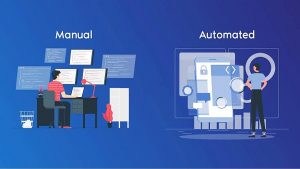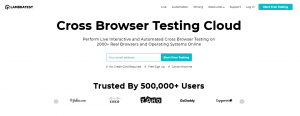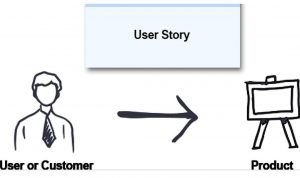
Today when apps can be downloaded in less than a minute, people are becoming more and more impatient. In a lot of horizons, slow and steady doesn’t win the race anymore. Rather you need to be fast yet fabulous in your job because any compromise isn’t tolerable. When there’s no shortage of alternatives, folks won’t wait for you. The need of the hour is to deliver perfection on time, or better, before time.
The IT industry is obviously not untouched by this promptitude. So many apps, websites and online services are emerging every day that it is getting difficult to stand out. But passion and diligence and attentiveness can ease your tasks. Work hard, work smart and work fast. Your delivery must be speedy and A1.

Your business’s success depends on how large of a crowd you pull. And digital assistance makes it much easier to have a global presence. Your website becomes your business card. The more informative and creative your website is, the more people it dazzles. Your first impression leaves a mark only when people can visit your website from any device, browser or OS unvaryingly. That’s when Cross Browser Testing comes into play.

Cross Browser Testing is checking your website’s rendition on all the platforms it is going to interact with. You got tools and techniques to do this type of testing right. However, just tools won’t do it all. You also need the right strategy.

The most rational step here would be to collect pieces of advice from the experienced professionals you get to meet. Keep researching, observing and learning the tips and tricks that could be a game-changer for you by saving you from taking any wrong move.
Having said all, let us move on to the actual purpose of this article: the useful hacks that are going to prove to be a friend in need in your testing endeavor.
· Testing must coexist with every SDLC phase
The deadliest mistake you can do is saving testing for the end. Never wait until final coding completion to test. Testing must run concurrently with every phase of the project development. For a spotless project, get into the habit of testing even the smallest unit of workable code. And of course, run tests after completing each phase. Test every functionality, every feature. In short, test whenever you get a chance.

· The daily practice of evaluation
Automating the tests should be an integral part of your daily schedule, no matter how frantic it seems to be. This helps avoid piling up test cases and saves the trouble of backtracking any error in the enormous stack of code. This healthy custom also points out those small mistakes that can be brushed aside once the whole production process is done. When you automate tests every day, rolling out frequent updates becomes easier as well.

· Manual vs Automation
A wise tester knows that manual testing and automation go hand-in-hand. Their righteous partnership makes the test process perfect. Even though automation relieves you from tiring and repetitive tasks and in turn paces up the development process, a 100% automation approach is still dangerous. Some situations are better to be tested manually and building test cases for them would complicate things and waste time as well. Automation is the right choice for testing heaps of codes on numerous browsers or for frequent code modifications, etc. But if it’s just a single functionality or feature, it is better to examine it manually.

· The cross-browser compatibility matrix
Extended browser adaptability is achieved when your web product is scalable and compatible with every browser-OS combination it encounters. Build a proper cross-browser matrix that will contain all of the major browsers that are popular among our audience, thus mapping out the catalogue of the browser you need to test your website upon. A cross-browser compatibility testing matrix is a collection of browsers based on the target audience preference. Use any analytical tool, like Google Analytics, and find out the percentage of traffic various browser-OS combinations are receiving and from where. This aids in selecting the appropriate platforms for CBT and remove the obsolete ones, hence reducing the workload.

· Every test deserves a distinct tool
Tools are the driving force of automation. Tools deserve the highest share of credit when the test automation is successful. That’s why picking out the right tool or tools requires thorough brainstorming. List down your project goals, and functionalities, nominate tools based on that. Also, consider the budget constraints. And as stated in the previous point, you always need to have a manual + automation approach. For this, choose a tool that is multifaceted enough to perform automation on a large scale and additionally can test manually when required on a small scale. Remember, this is a crucial decision because the wrong tool can ruin your efforts and switching tools midway is an extremely tedious task.

I would like to recommend one such versatile tool called LambdaTest. A robust, all-around, cloud-based tool that has a large and impressive array of features to assist your testing cycles. And the exciting part: you can test manually as well as resort to automation as and when needed.

· Go for the Cloud
It is obvious that you need to get your hands on all types of browsers your users favour. You can build a whole device lab comprising all the legacy browsers out there in the market. But this method is excessively costly and impractical. A better way is to choose a skilful, open-source, cloud-based tool that will provide you with an updated reservoir of the latest browsers and operating systems along with their subsequent versions. You get the benefits of all in one and there’s no hassle of updating and maintenance.

Try LambdaTest to get access to a wide range of browsers, operating systems, their latest versions, in varying resolutions. Live test your software on real machines to check their rendering compatibility on both desktop and mobile browsers. You also get the privilege of visual cross-browser testing by capturing full-page screenshots of your web pages across multiple devices, OSs, browsers, and resolutions automatically with just a single click. Start testing with a free sign up without needing to fill in your credit card details. You can cancel the subscription any time you like. Just take the free 60 min testing trial and see the efficacy of LambdaTest for yourself.

· Have a user’s eye view
Remember that you’re creating the application for the user. All the time, effort and resources that are put in, have one ultimate goal of presenting the audience with software that simplifies their lives. Therefore if you want your users to love your work, then adopt their perspective. The best method to get a taste of user expectations is to implement user testing wherein a batch of users like freelancers, students, friends or colleagues, use and test the application or website and report their feedback. You attain a better understanding of your audience wishes and offer a fresh ambit to your testing techniques.

Another vital aspect to keep in mind is the application’s usability for people with disabilities. Don’t forget to perform accessibility testing or usability testing of your web product to make it appropriately functional for people experiencing issues relating to hearing, colour blindness, old age and other disadvantages.
· Use the boons of unit testing
Unit testing is analysing the smallest possible block of code. It is so much easier to handle mini chunks of code than the whole project altogether. This rectifies the smaller errors early which would have been neglected, thus avoiding any ripple effect of mistakes. All units move along as error-free and you don’t need to run the entire project code for locating some minor fault.

· Discover the magic of breakpoints
Breakpoints basically help you to drive to the exact line where some modifications have been applied, in order to view the effect of the change. The inbuilt developer tools of the browsers let you add breakpoints to a specific line(s) of code. This will break the flow of the website at that exact point during page reloading and display the outcomes of the code improvement.

· Linting highlights silly mistakes
Code Linting is the basic analysis of your application’s source code to dig out programmatic and stylistic errors. This automated process is carried out by using a special tool called the linter or a lint tool. A linter is a fundamental static code analyzer. Linting does away with a lot of insignificant slip-ups and writing mistakes. It is truly frustrating, after running a tiring scan to catch the bug, to find out the fault to be a tiny syntax error. When you incorporate a linter in your test schedule, it will save you tons of office hours by automatically identifying these kinds of structural errors. You can find many handy linting tools in the market like JSHint, CSS Lint, etc. Include any of them in your bag of tricks to easily spot such trivial flaws.

· Keep an eye on your test’s coverage
It is also essential to ensure that the actual application code is under test. Many times testers do this dumb mistake of concentrating more on the test cases instead of on the actual project. This move wastes all the efforts and resources and nullifies the beauty of a methodically written test case as the real work didn’t get inspected. Therefore, regularly verify your test’s coverage. This step will also highlight any gaps that might be present in the requirements of the web product at a premature stage.

A seamless user experience across all kinds of platforms is going to give you the edge over your rivals. When your web content is loaded fast and smooth, it keeps your users happy and content and even increases your client base. Follow the lead of established tech giants. See what makes people hooked on them. Trust me, it’s not difficult to design an unblemished and exemplary user interface. The points mentioned in this article will make your testing journey convenient. And you keep learning more as you work your way through. Pick up as many suggestions as you can so that you don’t repeat some pretty common mistakes.




